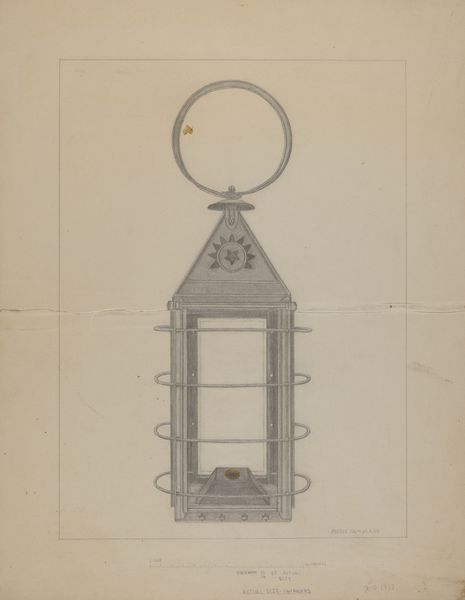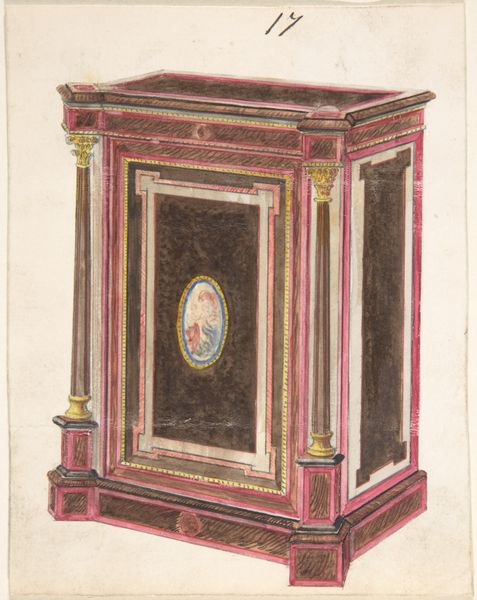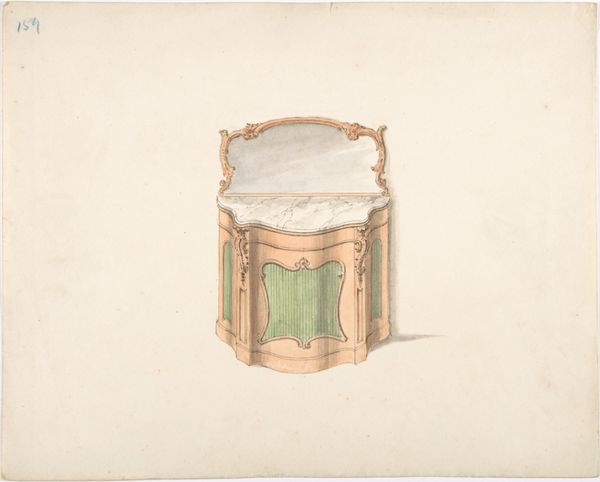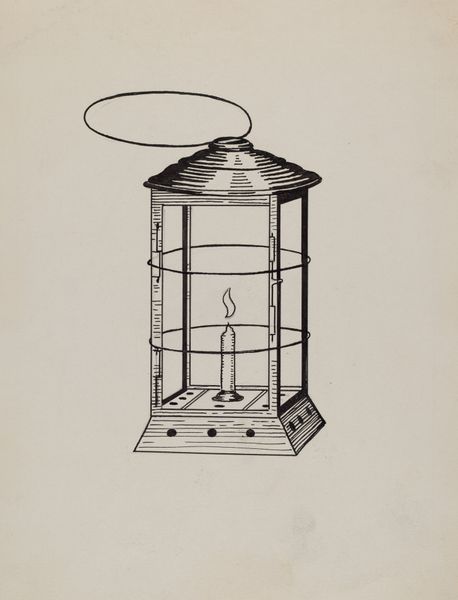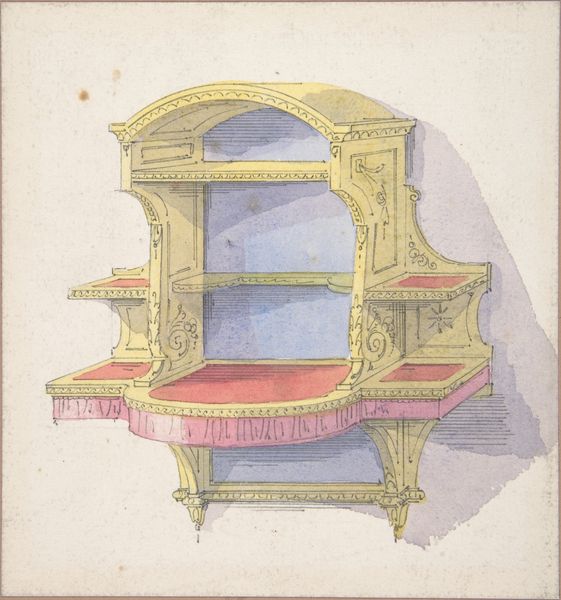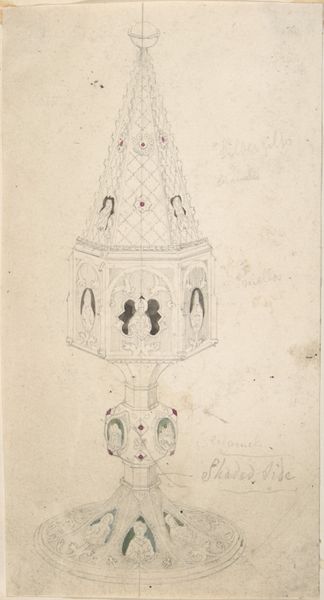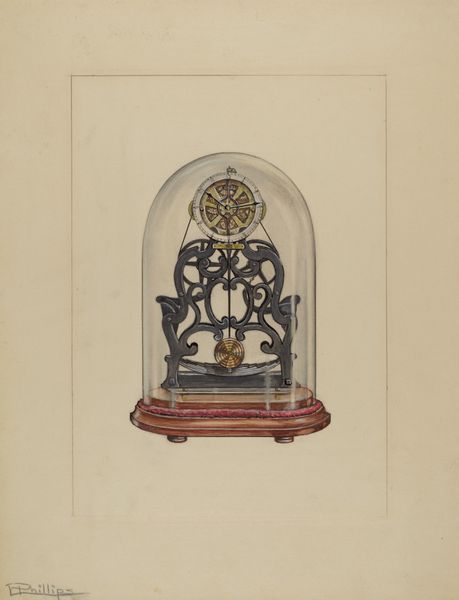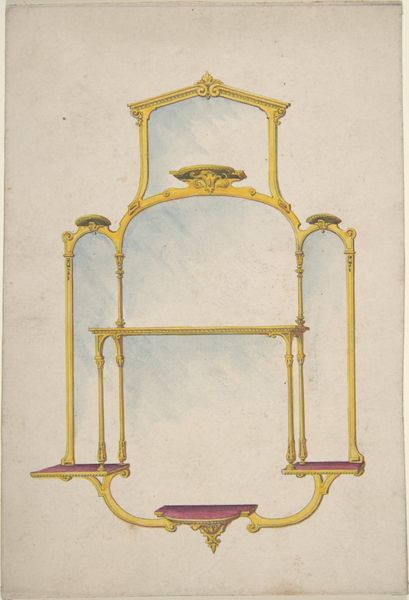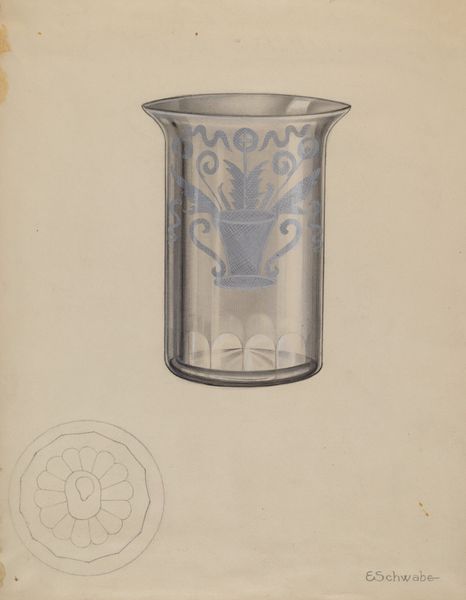
Design for an Octagonal Cabinet with Shelves and a Pink Interior 1800 - 1900
0:00
0:00
drawing, mixed-media, print, watercolor
#
drawing
#
neoclacissism
#
mixed-media
# print
#
form
#
watercolor
#
line
#
watercolour illustration
#
decorative-art
Dimensions: sheet: 7 x 5 3/8 in. (17.8 x 13.7 cm)
Copyright: Public Domain
Editor: This is a mixed-media drawing titled "Design for an Octagonal Cabinet with Shelves and a Pink Interior," probably made sometime between 1800 and 1900. The color palette gives it an almost ethereal, dollhouse quality. What do you see in this piece beyond the surface? Curator: I see a material manifestation of societal expectations. The Neoclassical style, with its emphasis on order and symmetry, speaks to a desire for control and refinement, ideals often imposed, particularly on women, in the 18th and 19th centuries. That the cabinet is "pink," speaks to gendered spaces and perhaps even reflects a constrained role. What do you think this space would have held? Editor: I imagine it would have held things like porcelain dolls or tea sets, items that reinforced domesticity. But what if the owner defied those expectations? Curator: Exactly! Consider the subversive potential. Could the pink, typically associated with softness, be a subtle act of defiance against rigid expectations? Perhaps by placing radical pamphlets or scientific tools on the shelves, challenging prescribed norms. Editor: That shifts the way I see the design. It is more than just a pretty drawing. It's a silent battleground of identity. Curator: Indeed. And who designed it? Was it designed by a man *for* a woman? Or designed *by* a woman? This would affect interpretation significantly. What did you learn looking at it in this context? Editor: That even seemingly innocuous decorative art can reflect power dynamics and potentially become tools for subversion. There is more to an artwork than meets the eye! Curator: Precisely. Context unlocks the silent narratives embedded within the aesthetic.
Comments
No comments
Be the first to comment and join the conversation on the ultimate creative platform.

